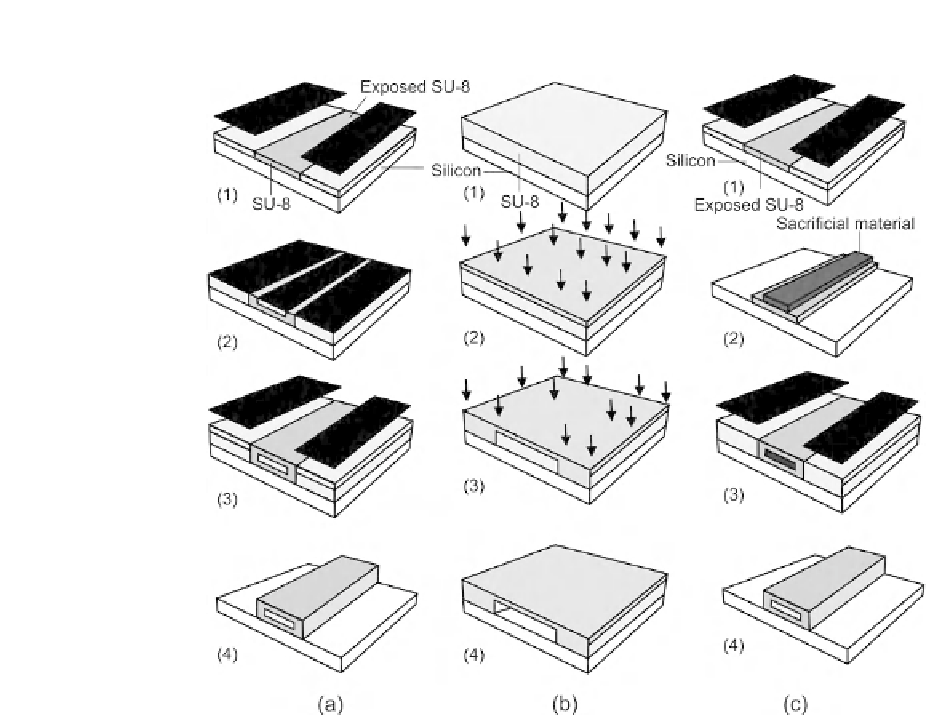Biomedical Engineering Reference
In-Depth Information
FIGURE 4.10
Fabrication of covered channels with SU-8: (a) with embedded mask (after
[62]
); (b) selective proton writing
(after
[65]
); and (c) with sacrificial layer (after
[63]
).
into the SU-8 layer and forms a thin polymerized layer (
Fig. 4.10
(b,2)). Next, the proton beam with
higher energy polymerizes the sidewalls of the channel. The high energy allows the beam to penetrate
through the SU-8 layer down to the substrate surface (
Fig. 4.10
(b,3)). In the final step, the exposed SU-
8 is developed, resulting in a covered microchannel (
Fig. 4.10
(b,4)).
Another method uses a sacrificial layer
[63,64]
to fabricate a closed SU-8 channel. The first SU-
8 layer is coated, exposed, and developed to form the bottom of the channel (
Fig. 4.10
(c1)).
Subsequently, a sacrificial structure is deposited and patterned (
Fig. 4.10
(c2)). The sacrificial
material can be thermoplastics, waxes, epoxies
[63]
, or positive photoresist
[65]
. Because of the
self-planarizing nature of an unexposed SU-8 film, the sidewalls and the channel ceiling are formed
with a single coating of a second SU-8 layer (
Fig. 4.10
(c3)). After developing the second layer, the
sacrificial material
inside the channel
is removed,
leaving a closed SU-8 microchannel
(
Fig. 4.10
(c4)).



Search WWH ::

Custom Search